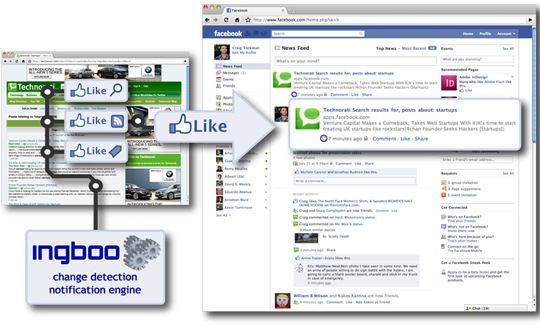We recently visited an Internet startup in Silicon Valley to discuss social syndication tools. The CEO of the company was really focused on SEO and SEM. He was asking that we help them in the user-acquisition area. Focusing on the ever changing “keyword landscape” is a full-time job in itself, most often requiring expert skills. Depending on the business, you typically also know the return on investment. For example, for every dollar spent on SEM, you make 2 dollars. However, there is plenty of reason to look beyond SEO/SEM.
For starters, you may be able to improve the ROI with the budget you have. Secondly, referrals from sources other than search portals, are increasing. In fact, indications are that social networking referrals havedoubled in the past year. Another interesting development is the integration of social networking into web sites with Facebook leading the charge. Mashable shared some statistics on the effects. For example, page views per user was up by 92% for some sites (e.g., NHL.com).
Current Model for SEO and Social Syndication
Most web sites attract visitors via search. Once on the site, the visitors are offered social tools for sharing content, such as Retweet or Facebook Like buttons. Sharing extends reach into social communities and attracts additional visitors. The visitors are interested in the content offered by the site and they will share content they like. They will spend time but seldom convert to customers on the first visit. When they leave the web site, they rarely remember the URL. If you are lucky, the user will bookmark your site. Additional resources are therefore invested to get them to revisit, which then drives down the ROI.
Leverage User Intent
The visitors were genuinely interested in the products the site had to offer. They would benefit if it was easier for them to find their way back. There are some tools available to connect with the audience, such as email newsletters. Some users sign up, most people don’t due to the spam perception. Sharing has been simplified by Facebook via the Like button. You can leverage this user expression of appreciation to generate more revisits without the additional SEM expendeture.
Sharing and Keywords Combined
The Facebook Like button defines a relationship between the publisher and the user. The relationship is reflected on the Facebook wall and the event is shared in the news feeds for that user. If you add a context and automate the way you touch the user with ongoing, relevant content, revisits increase as well. The context should be defined by user actions, such as on-site search, reading and liking articles or visiting and liking segments of the site. One such tool is Facebook Like for Dynamic Content by IngBoo. IngBoo generates Like connections, defined by keywords (tags, categories, search expressions, etc.).
When new content is available on the site, IngBoo automatically detects this, filters by the keywords and updates users who are connected. The updates appear in the Facebook news feed. We have seen exponential (30x) improvement in revisits with 25% increase in page views as a result. There are at least two feedback loops here: First, the keywords that represent the most popular connections can be used in SEO and SEM efforts. Second, content that is shared (Liked) inside the Facebook news feed represents elevated engagement levels, something every editor pays attention to.


